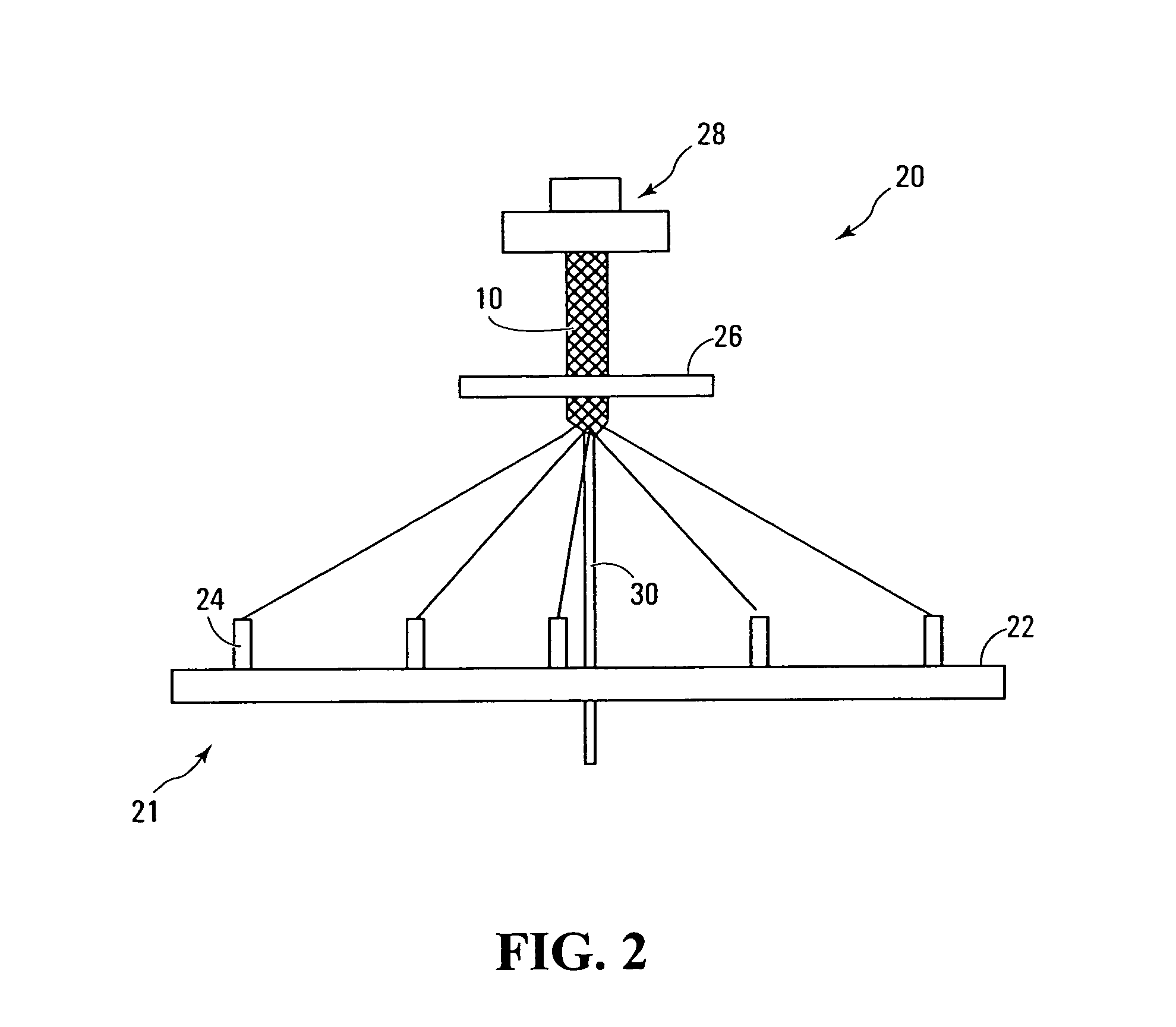Medical guide tubes
a technology of guide tubes and tubes, applied in the field of tubes, can solve the problems of lack of graft material, structural differences, and potential pain of neuromas, and achieve the effects of avoiding the formation of neuromas
- Summary
- Abstract
- Description
- Claims
- Application Information
AI Technical Summary
Problems solved by technology
Method used
Image
Examples
Embodiment Construction
[0015]FIG. 1 shows a partially braided NGC 10 made in accordance with this invention. As will be apparent from FIG. 1, the NGC is comprised of braided strands 12 of fibers 14. Each strand may comprise a bundle of fibers and each fiber itself may be a twisted bundle of monofilaments. The monofilaments, and hence the fibers 14, are biocompatible biodegradable polymers. Suitable polymeric fibers are made of 10:90 poly(L-lactide-co-glycolide) (PLGA) or chitosan. The fibers may have a diameter of about twenty microns. The NGC 10 may have an internal diameter of about 1.27 mm, equivalent to the diameter of the axon of a peripheral nerve. The angle made between a strand and the central axis 16 of the tube may be about 45°. Wall thickness of the NGC is a function of fiber thickness (i.e., diameter) and the number of fibers in each fiber bundle. By virtue of being braided, nerve guide conduit 10 has the advantage of being highly flexible and easily suturable to the proximal and distal nerve ...
PUM
| Property | Measurement | Unit |
|---|---|---|
| diameter | aaaaa | aaaaa |
| interior angle | aaaaa | aaaaa |
| diameter | aaaaa | aaaaa |
Abstract
Description
Claims
Application Information
 Login to View More
Login to View More - R&D
- Intellectual Property
- Life Sciences
- Materials
- Tech Scout
- Unparalleled Data Quality
- Higher Quality Content
- 60% Fewer Hallucinations
Browse by: Latest US Patents, China's latest patents, Technical Efficacy Thesaurus, Application Domain, Technology Topic, Popular Technical Reports.
© 2025 PatSnap. All rights reserved.Legal|Privacy policy|Modern Slavery Act Transparency Statement|Sitemap|About US| Contact US: help@patsnap.com



